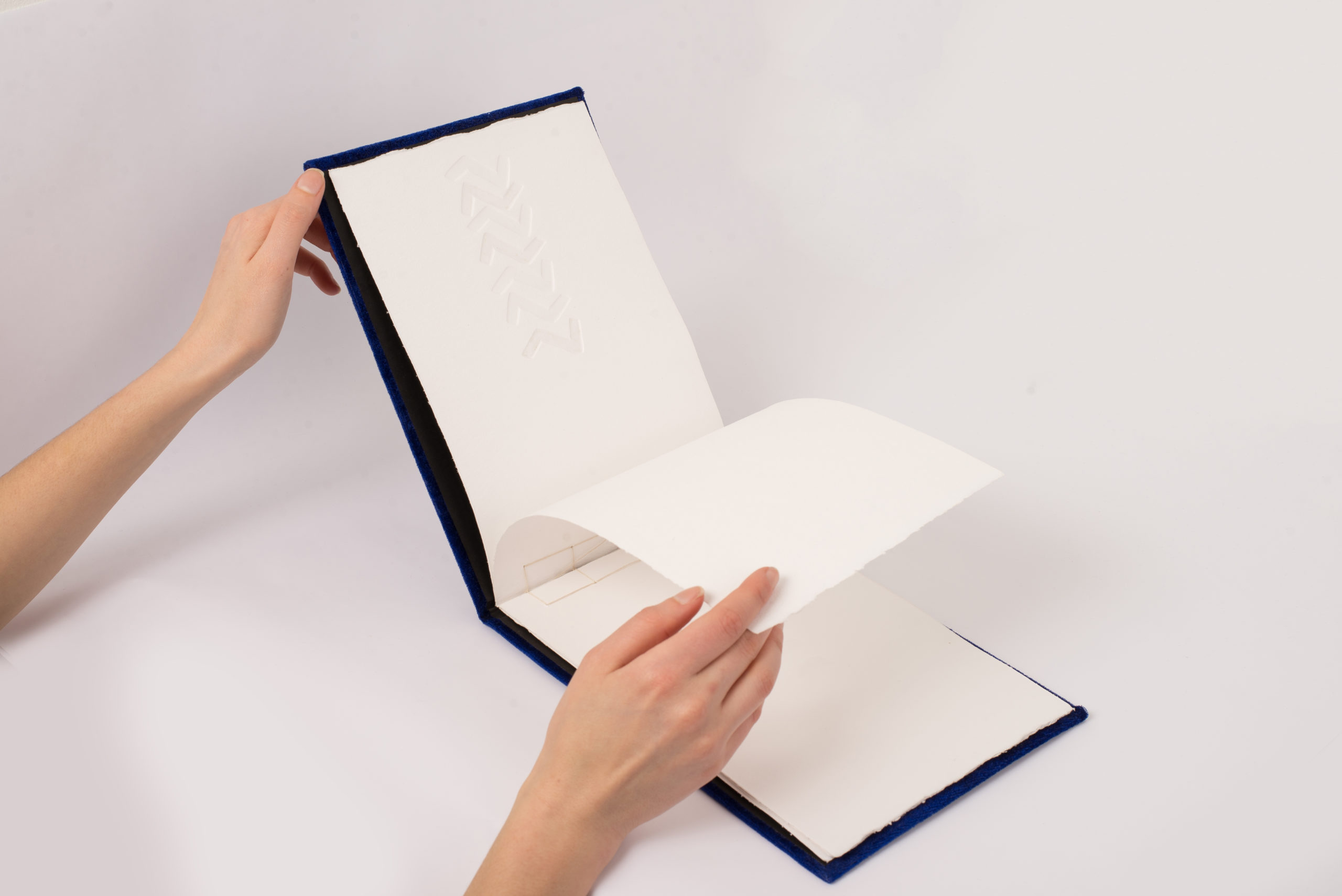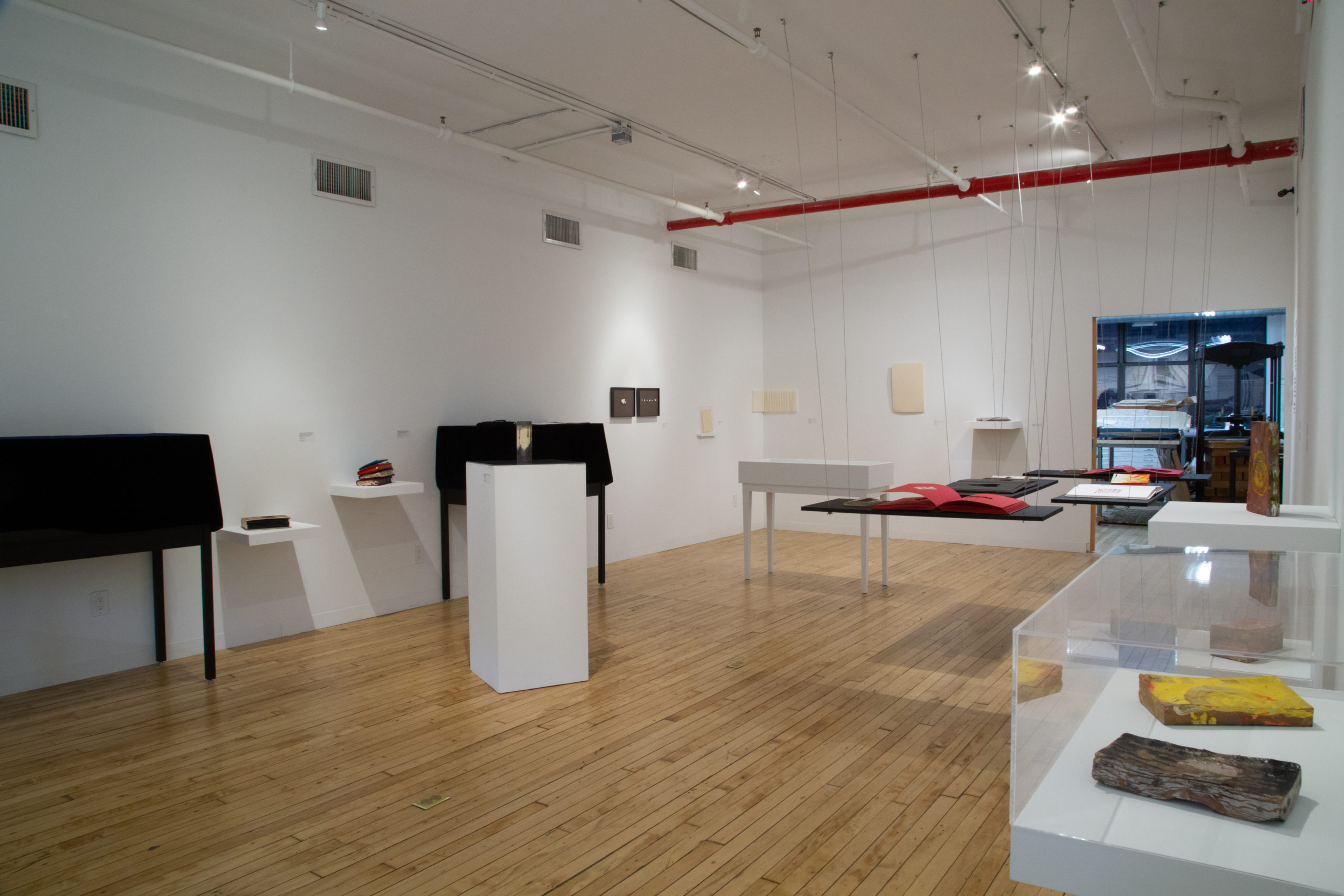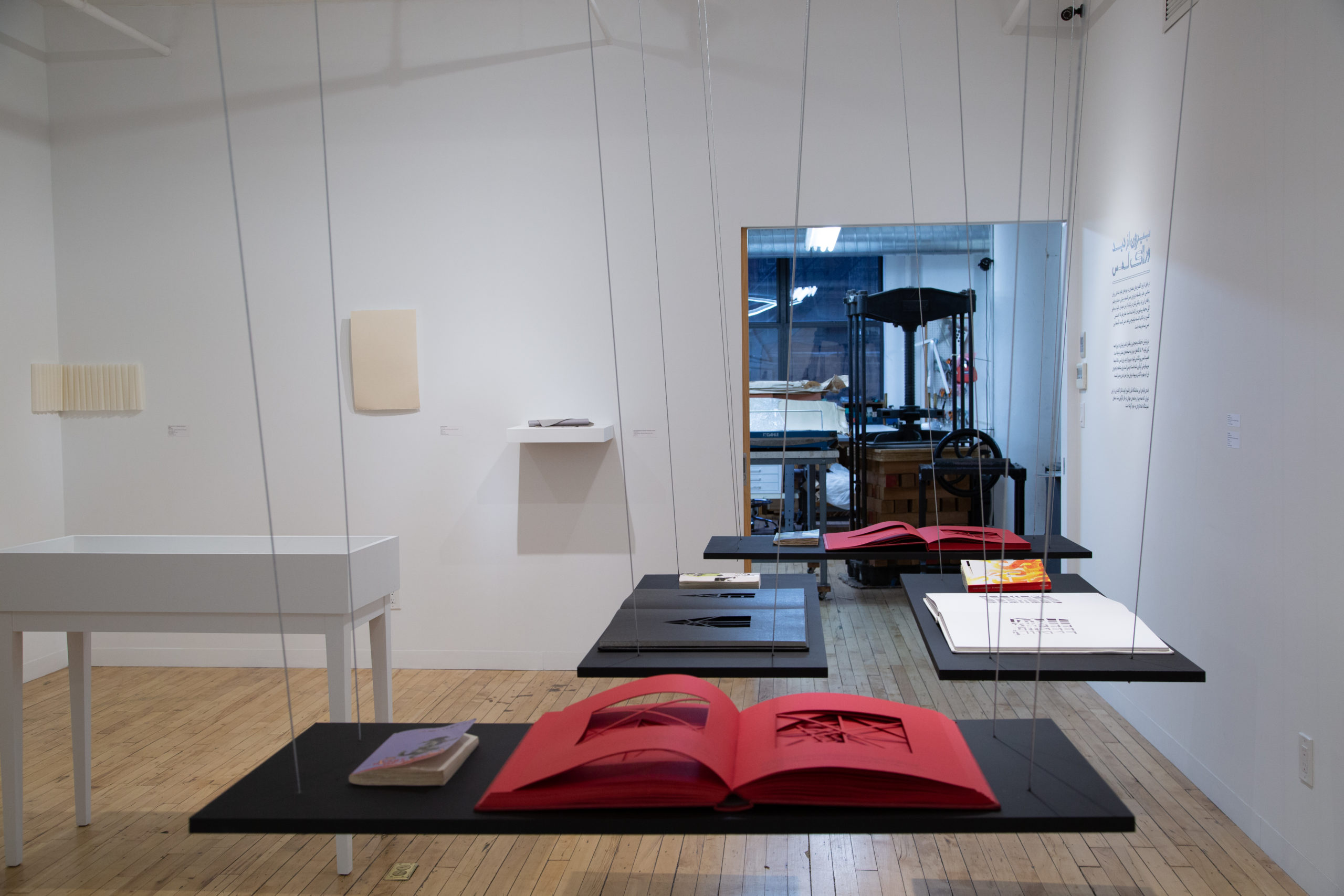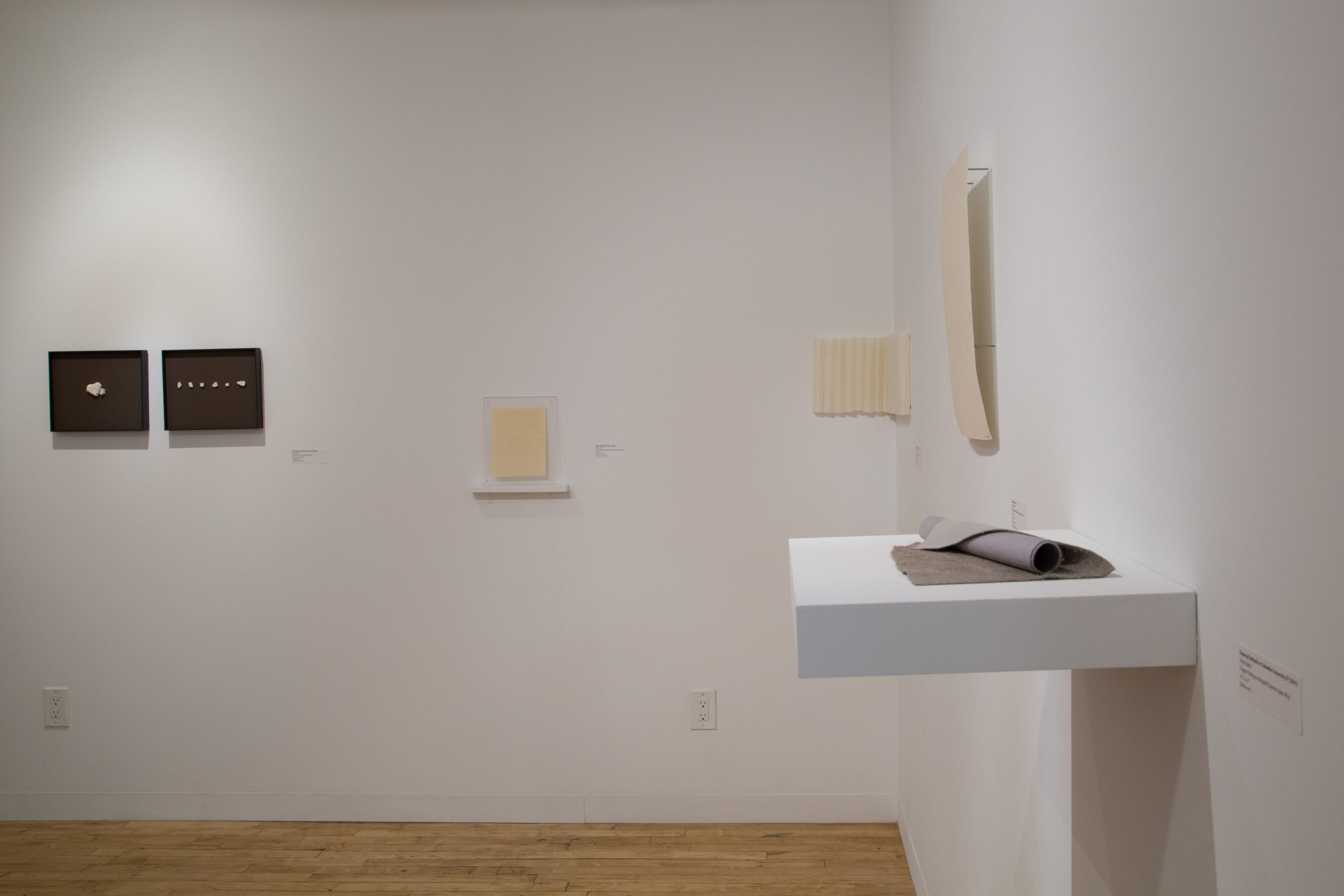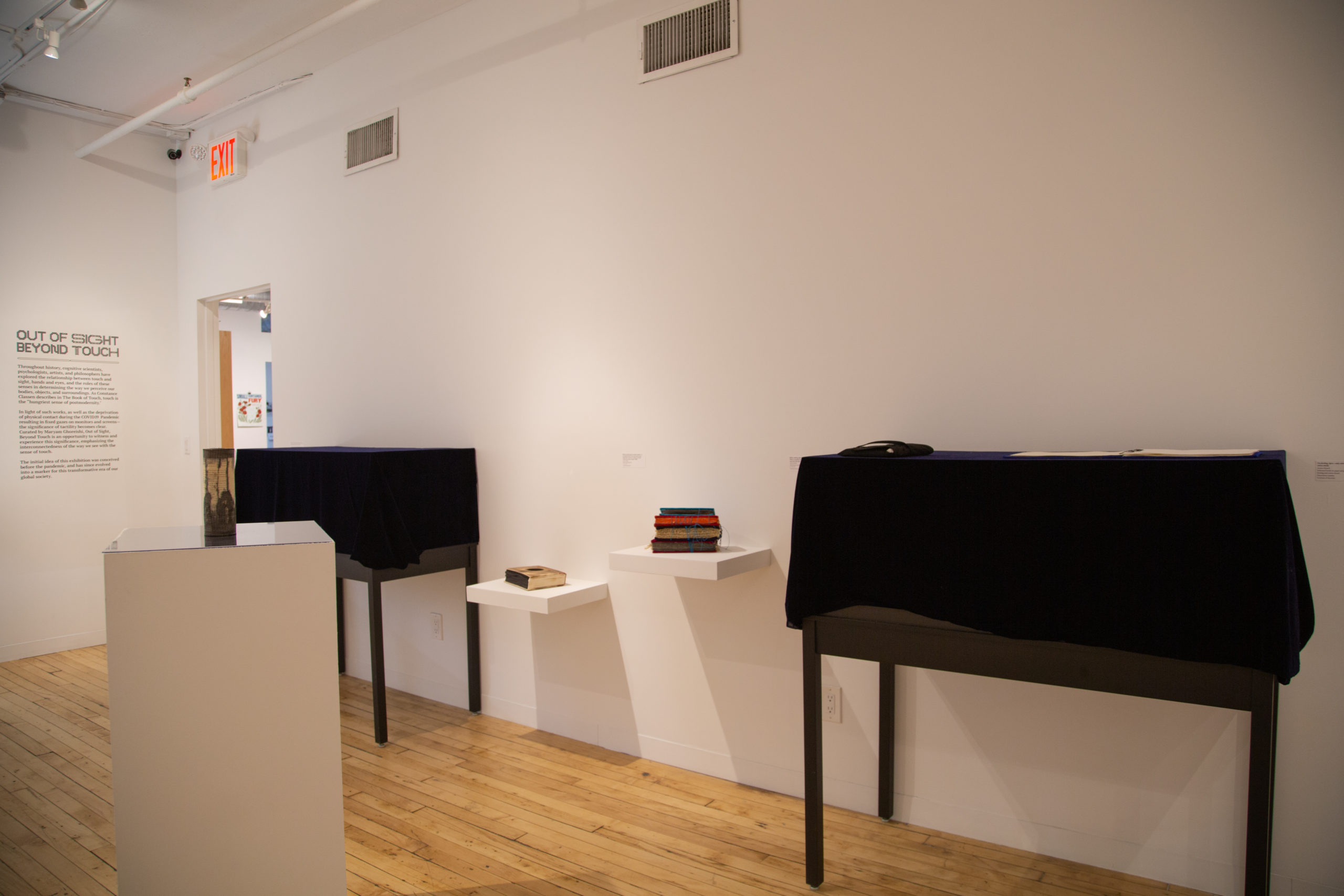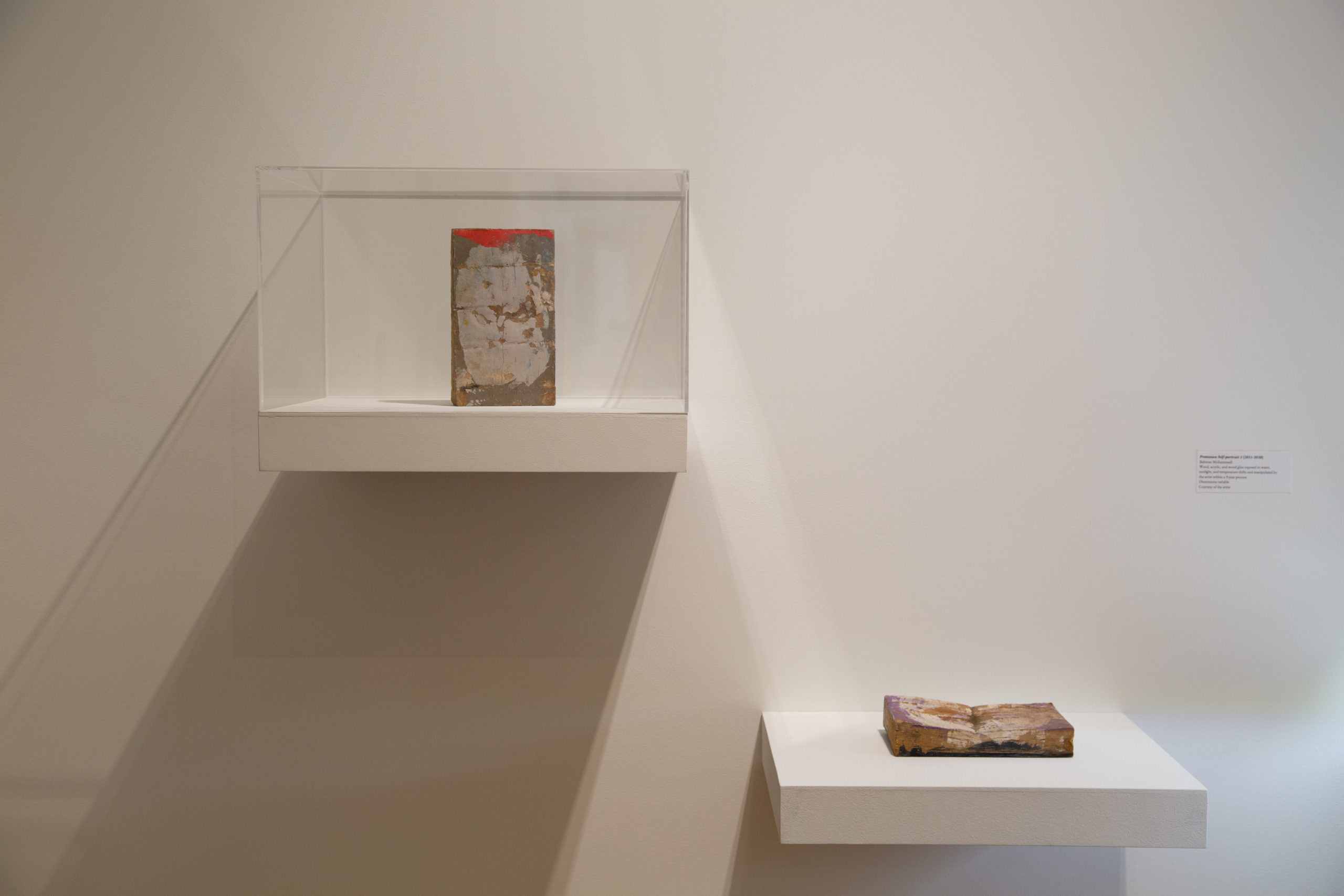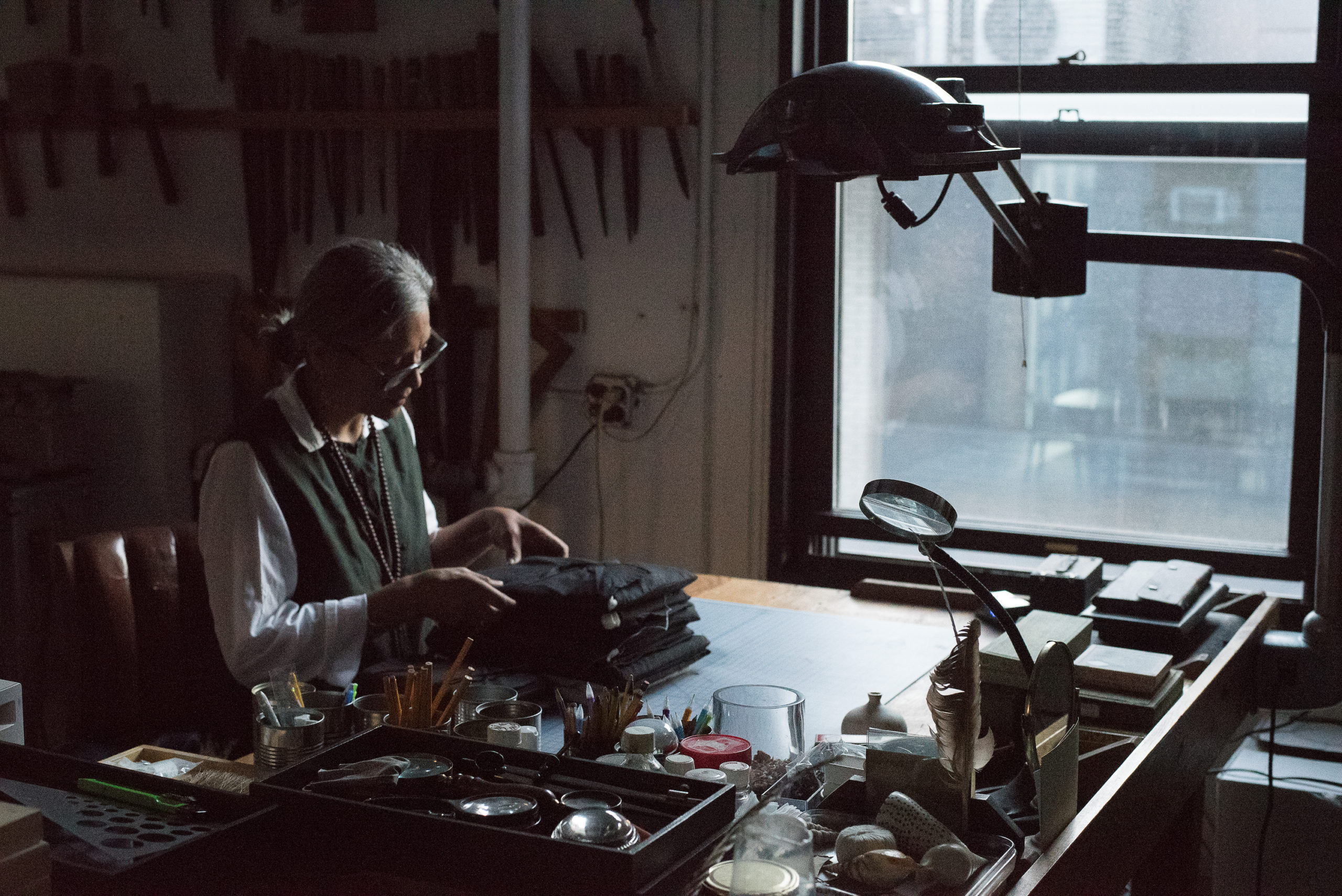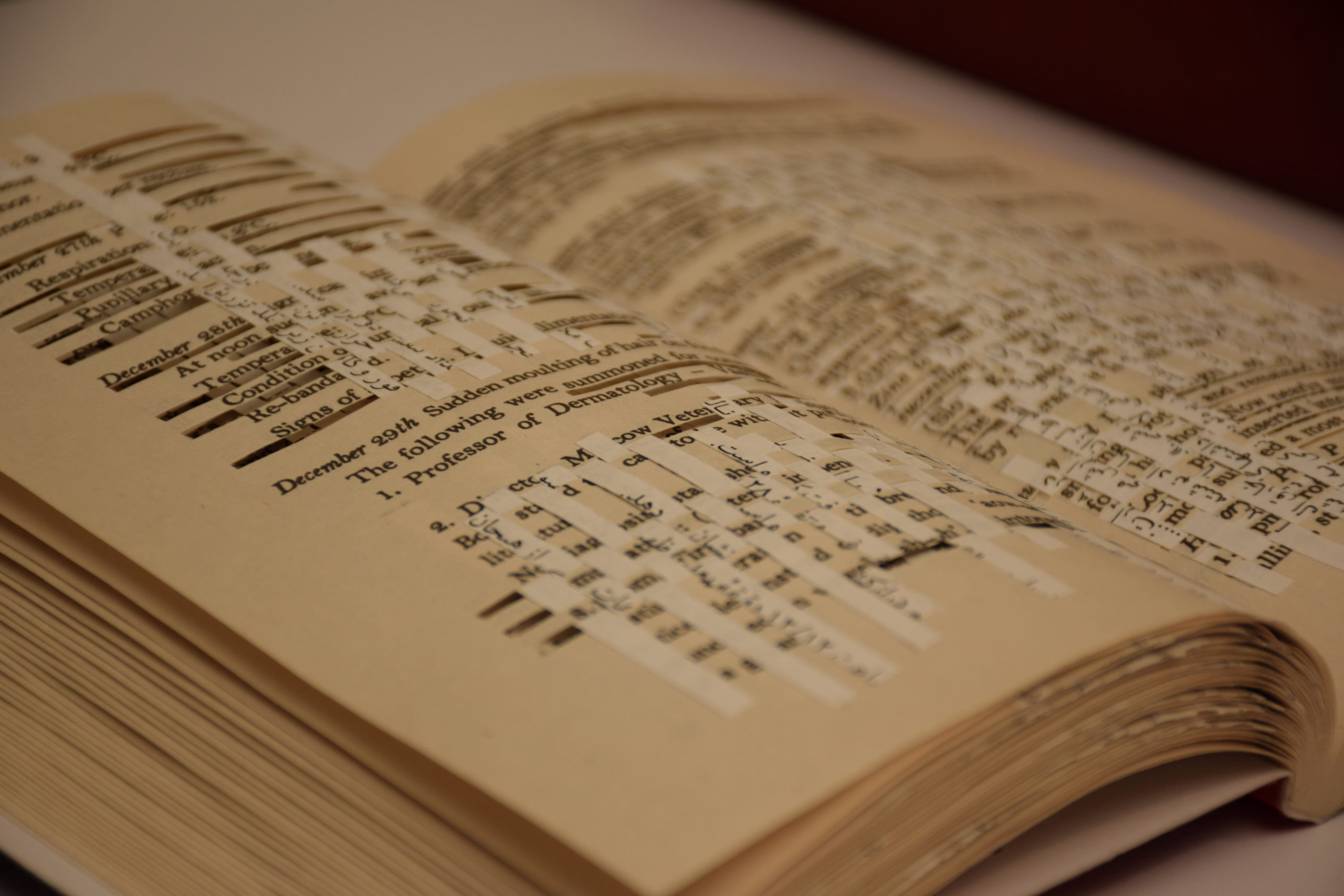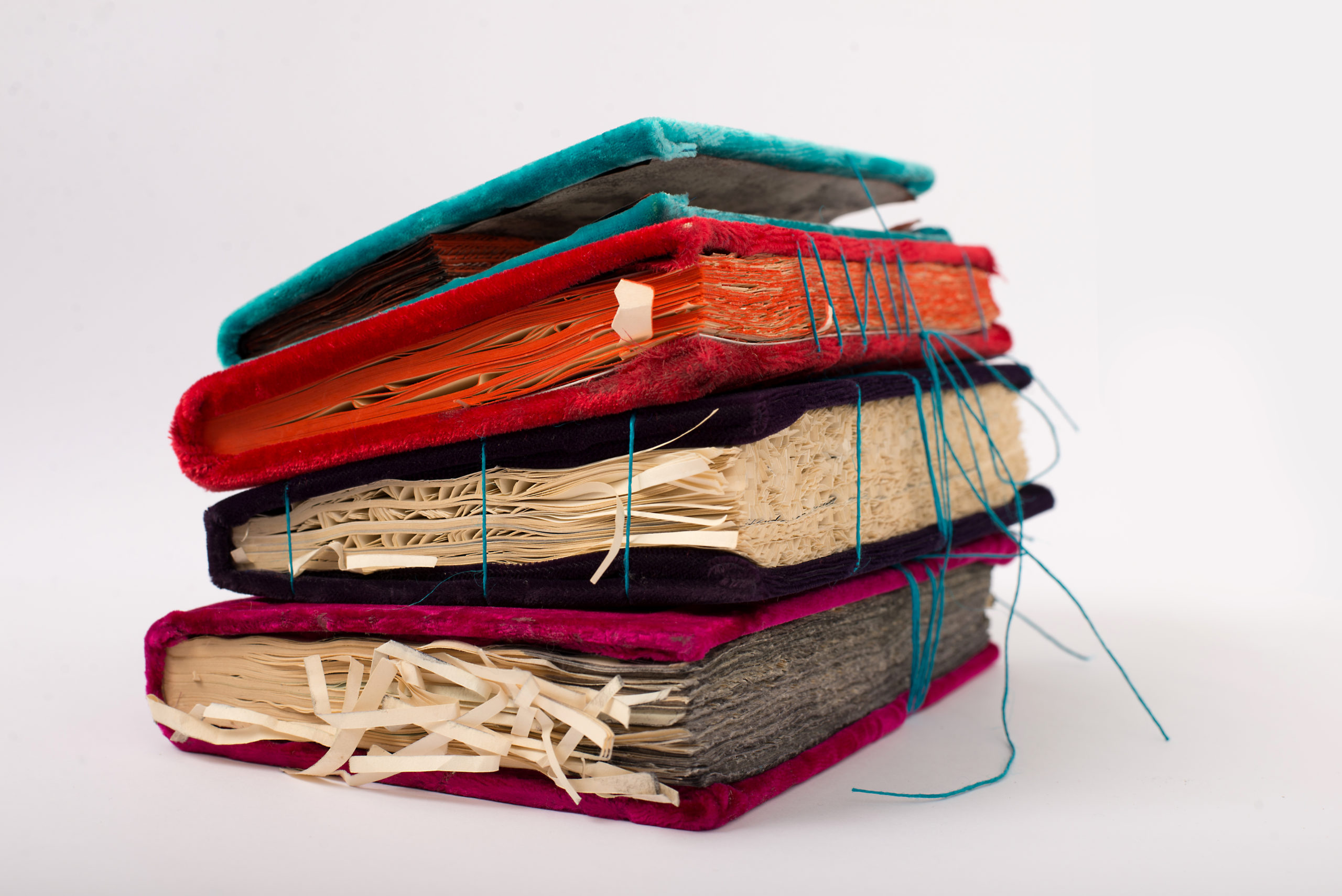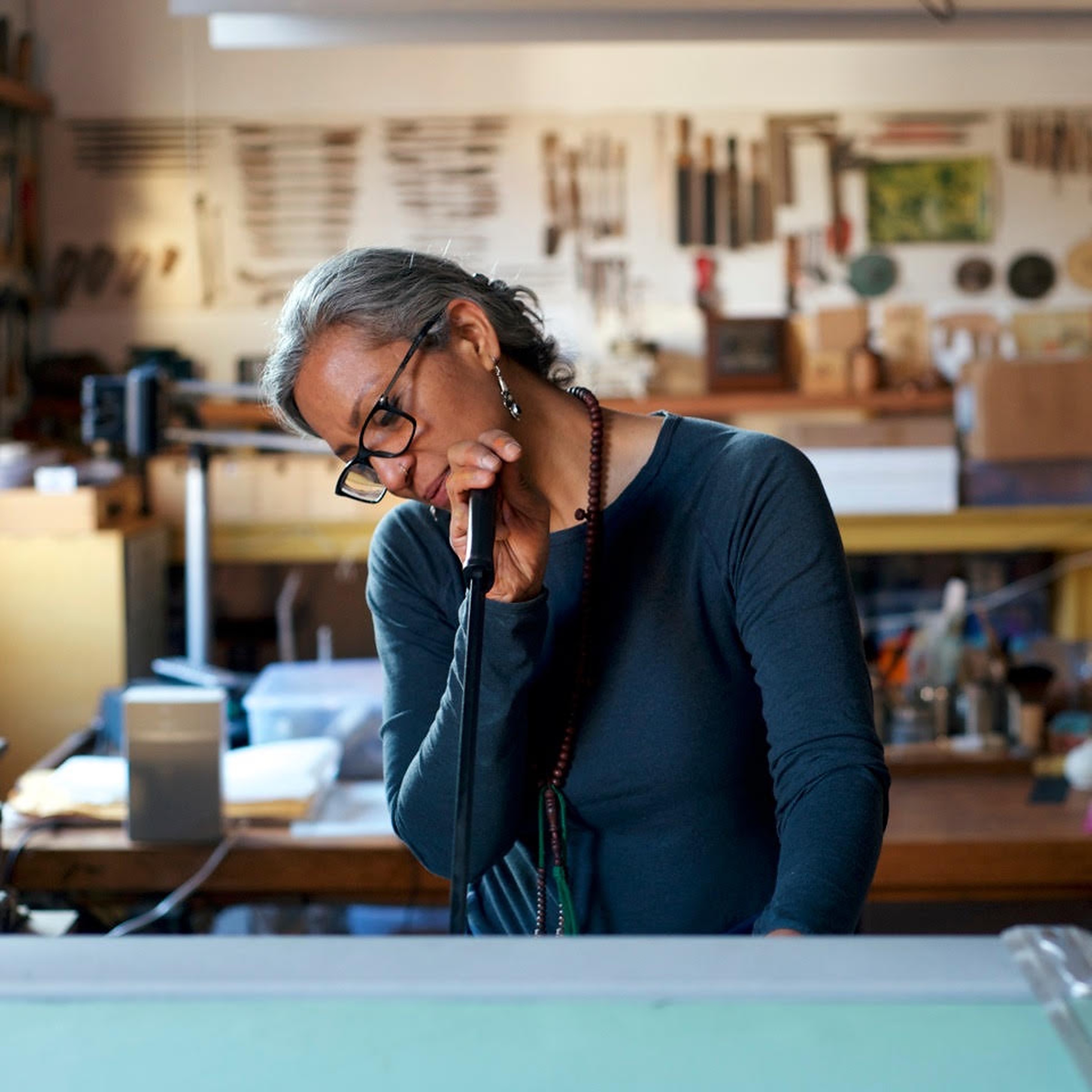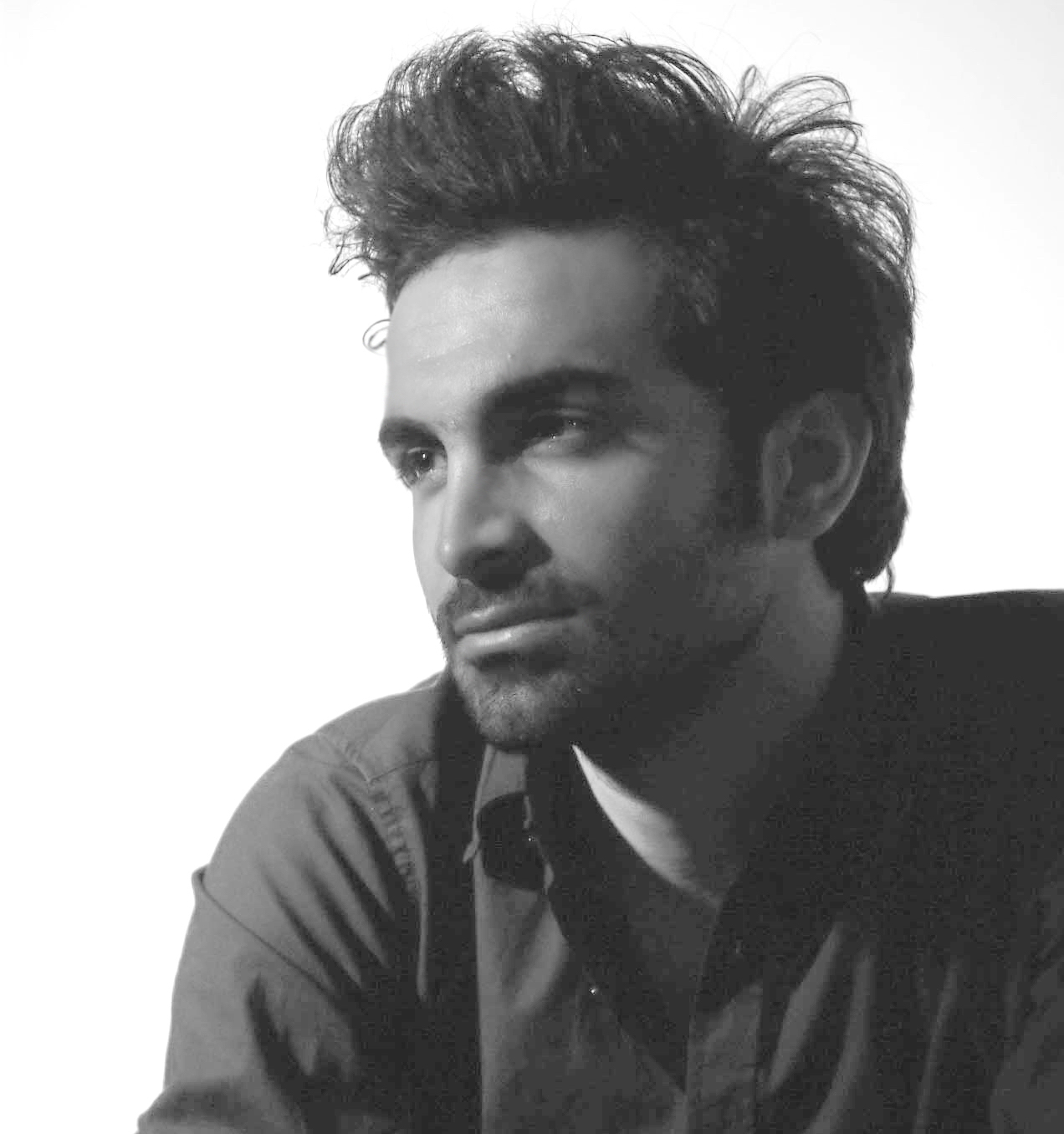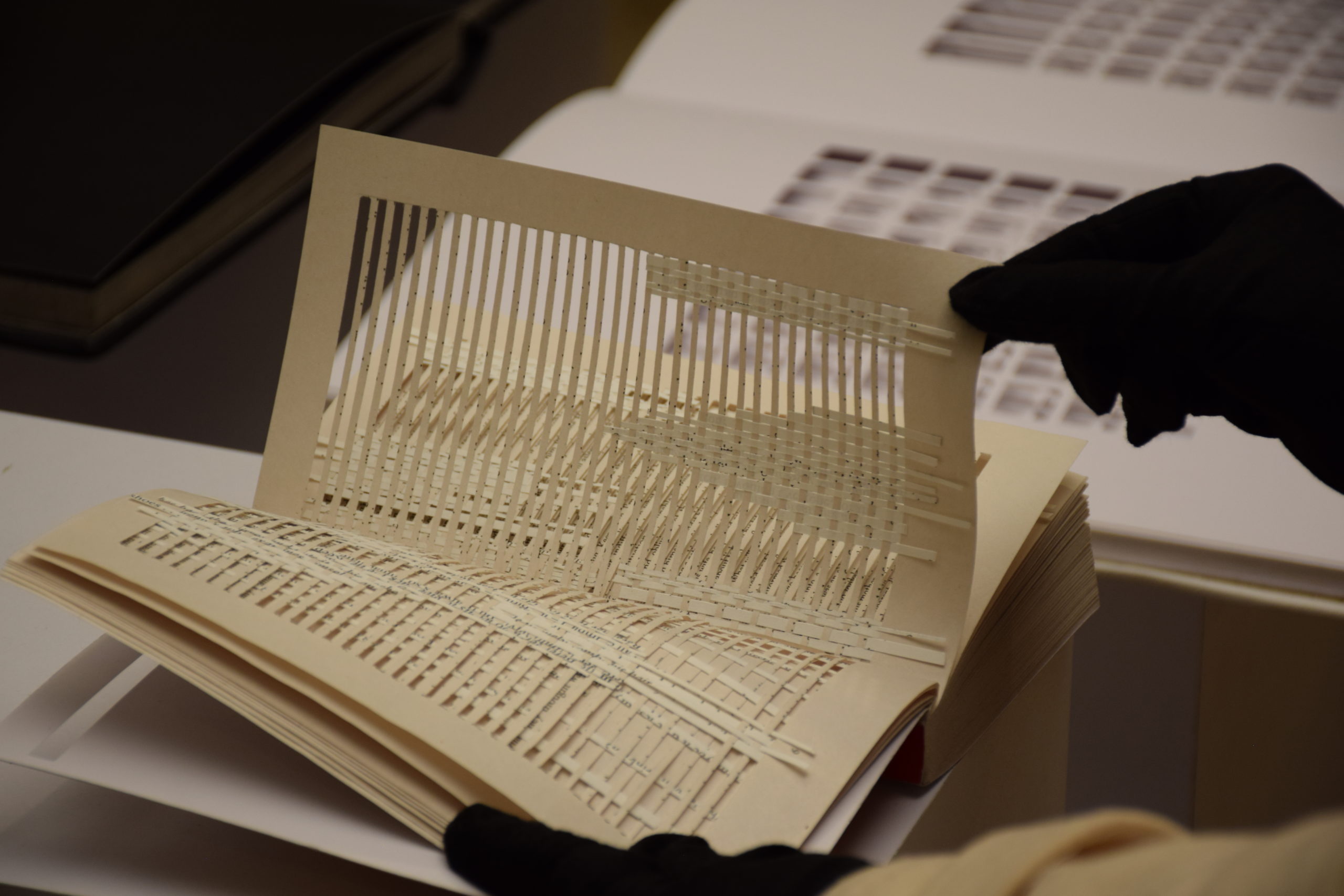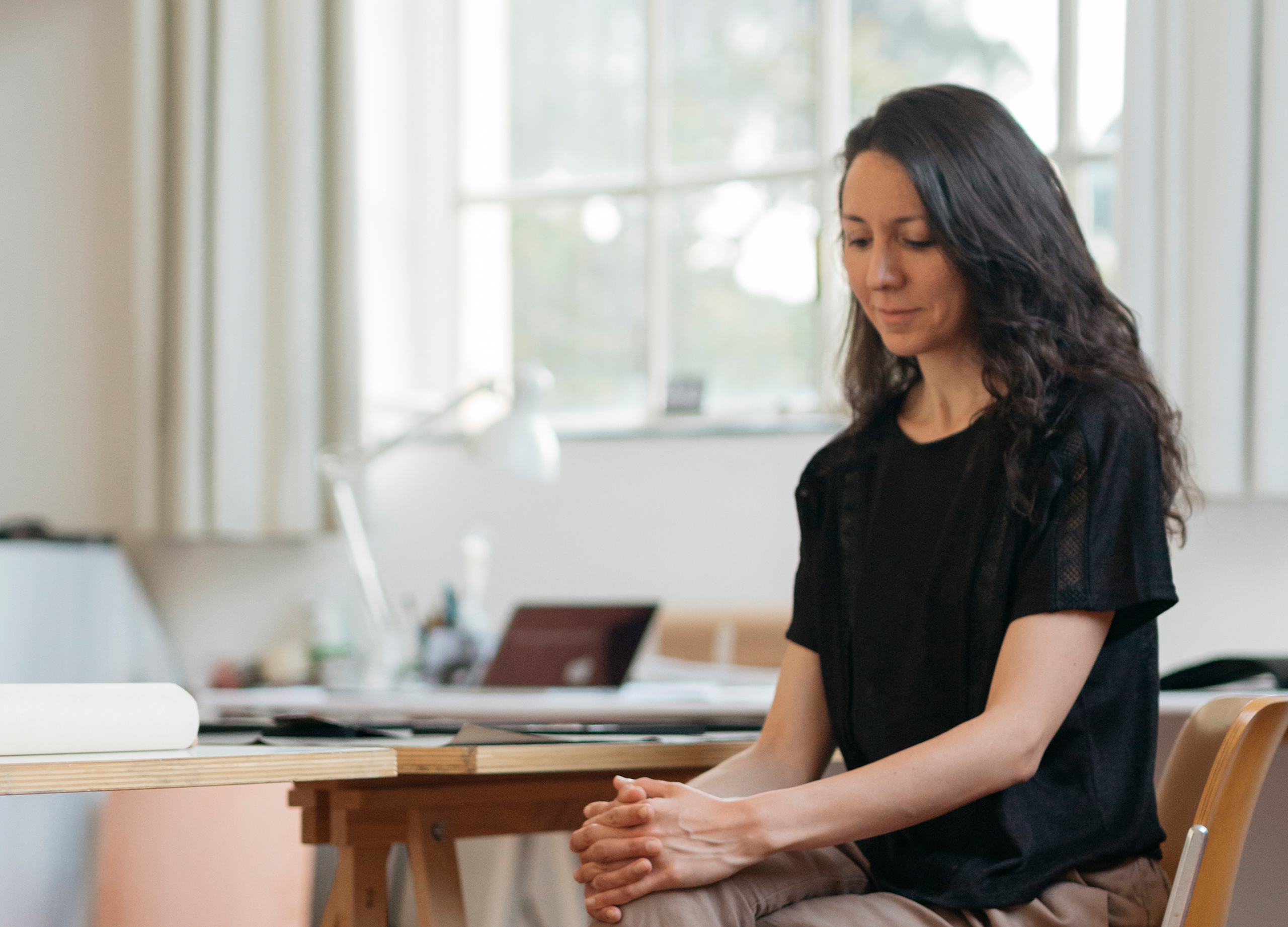Out of Sight, Beyond Touch بیرون از دید، ورای لمس
Curated by Maryam Ghoreishi.
Throughout history, there have been many discourses on the relationship between the senses of touch and sight, the eye and hand. The fields of art, psychology, philosophy, and cognitive science have all shed light on how these senses influence human understanding and perception of their bodies, objects, and the environment around them. In light of these fields of inquiry, researcher Mark Paterson has argued that “within an academic climate that celebrates visual cultures, and the popular media’s infatuation with visuality, touch remains largely neglected, forgotten” (The Senses of Touch 2007, 1).
Curated by Maryam Ghoreishi, Out of Sight, Beyond Touch not only investigates the sense of sight, but also of touch. Through the artworks of Amina Ahmed, Bahman Mohammadi, Masoumeh Mohtadi, and Shirin Salehi, each of these senses— either acting alone or working together— reminds the visitor of the vital role of discovery and understanding that sight and touch play together in determining tactile sensations. Visitors’ interactions with each artwork imply the concept of mystery via confrontations with unfamiliar objects or situations. While some works are covered and may only be touched, some can only be viewed, not touched: each concealing a different approach, resulting in the process of discovery. Out of Sight, Beyond Touch is also designed with a reading section containing multiple books in English, Farsi, and Spanish, with a sculpture by Ramyar Vala.
These books have been used either by the artists in the exhibition as conceptual sources or by the curator in her research, thus revealing the research and construction process. In accompaniment to the exhibition, a master class and a workshop/seminar by Shirin Salehi will explore the relationship between the concepts of silence and mystery, as well as a book-making workshop by Amina Ahmed in which she will bind all of the slips of paper class’s collective experience of her work into a book.
در طول تاریخ، گفتمانهای متعددی در حوزههای علوم شناختی، روانشناسی، هنر، و فلسفه دربارهی حس لامسه و بینایی، دست و چشم، رابطهی این دو، و تأثیرشان در درک و دریافت ما از بدن خودمان، اشیاء و به طور کلی محیط پیرامونمان ارائه شده است. در پرتوِ این تحقیقات، البته، مارک پترسُن معتقد است که “بها دادن به فرهنگِ تصویری در فضای آکادمیک و شیفتگیِ رسانههای عامه با تصویر، حس لامسه را به شکل گستردهای به حاشیه رانده و به فراموشی سپرده است.” (حس لامسه، ۲۰۰۷، ۱) در نمایشگاهِ بیرون از دید، ورای لمس، که توسط مریم قریشی گردآوری شدهاست، نه فقط حس بینایی بلکه حس لامسه، رابطهشان با همدیگر، و نقشِ مهمی که این دو—چه به تنهایی و چه در رابطهای تنگاتنگ با هم—در جریان کشف و شناخت دارند به مخاطب یادآوری میشود.
در این نمایشگاه آثار امینا احمد، شیرین صالحی، بهمن محمدی، و معصومه مهتدی ارائه میشود و چیدمان آثار به شکلیست که رابطهای رفت و برگشتی بین حس لامسه و بینایی را در مخاطب به جریان میاندازد. تعامل مخاطب با هر اثر، به عبارتی مواجههی او با شئ یا وضعیتی ناآشنا، اشارهای ضمنی به مفهوم رمز و راز دارد. مواجهه با بعضی آثار محدود به تجربهی لامسه و با بعضی صرفاً دیداریست که منجر به شکلگیریِ مسیرِ متفاوتی از کشف میشود. در بیرون از دید، ورای لمس، همچنین، با ارائهی مجسمهای از رامیار والا، اتاق مطالعهای طراحی شدهاست که کتابهای متفاوتی به زبانهای انگلیسی، فارسی، و اسپانیایی را در خود جای داده است.این کتابها توسط هنرمندان یا گردآورنده در جریان تحقیق و ساخت کارها استفاده شده است که مسیر شکلگیریِ آثار و البته گردآوریِ این نمایشگاه را نشان میدهد. همزمان با بیرون از دید، ورای لمس، کلاس و کارگاهی توسط شیرین صالحی برگزار میشود که به رابطهی مفاهیمِ سکوت و رمز و راز میپردازد. در ادامه، کارگاهِ کتابسازیِ امینه احمد خواهد بود که از تمام نوشتهها و طراحیهای جمعآوری شده در طول نمایشگاه، که پاسخهای مخاطب به اثرش هستند، کتابی ساخته میشود
Relavant Links:
- Interview with Mark Paterson
- Interview with Ramyar Vala
- Feature in International Sociological Association
- Books to See and Feel, Kate Silzer, Hyperallergic, February 27, 2021
- Books On Books Collection – Masoumeh Mohtadi, Review by Robert Bolick
Support for the Center for Book Arts’ visual arts programming is provided, in part, by the New York State Council on the Arts, with the support of Andrew Cuomo and the New York State Legislature, and by public funds from the New York City Department of Cultural Affairs in partnership with the City Council.
